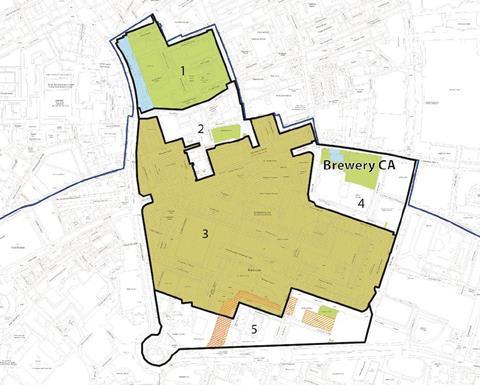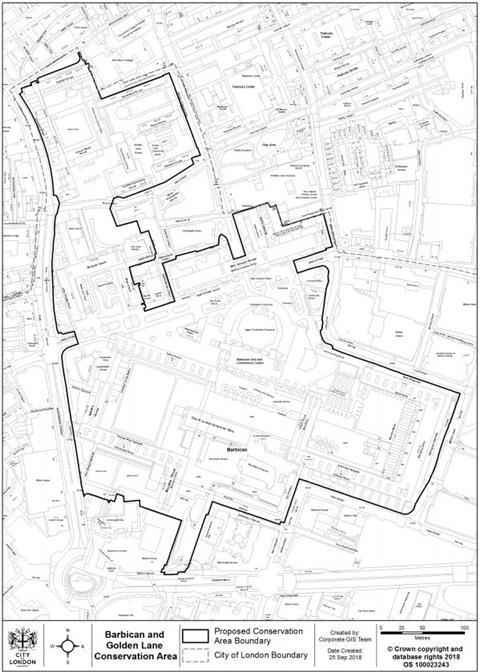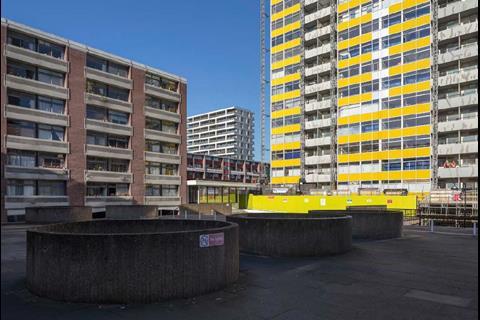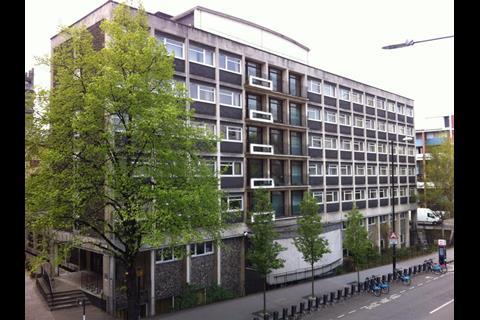Final version puts back some areas cut out of earlier ’emasculated’ proposal
The City of London Corporation has given its backing to the creation of a new conservation area for its Barbican and Golden Lane estates that includes some areas controversially missed out of earlier proposals.
Members of the residents’ associations representing both of the Chamberlin, Powell and Bon-designed estates last year submitted a request for the creation of a super-conservation area covering both sites, the nearby Brewery Conservation Area and the Museum of London site to the south-east.
But City planning officers questioned the justification for such an all-encompassing heritage zone and suggested the creation of separate conservation areas for each estate that excluded buildings in between, the Brewery area and an area dubbed “zone 5” including the museum, north of London Wall.
At the time, architect and chairman of the Golden Lane Residents’ Association Tim Goldsmark told BD that City planning officers had “emasculated the proposal” and risked failing to adequately protect the area’s architectural merit.

He said officers’ decision not to recommend the inclusion of the area between Golden Lane and the Barbican was a particular source of disappointment because it left a tranche of land open to “inappropriate development”.
After consulting on its proposals, the City decided to revise the conservation area plan and create just one CA for both estates, incorporating part of the area between them – principally Bridgwater Square, and Bridgwater House, one of the few buildings to survive the wartime bombing of the area.

Officers also agreed to include the Barbican Registered Park and Garden, the Barbican Wildlife Garden, and sections of the London Wall Scheduled Ancient Monument.
A report to members of the City’s planning and transportation committee said residents had cited the demolition of 1970s Bernard Morgan House for replacement with the AHMM- and White Ink-designed The Denizen building as the kind of development they hoped the creation of a conservation area would help to prevent.
Conservation group the Twentieth Century Society was among the consultees expressing disappointment that the City did not propose to include all of the so-called “zone 2” of the originally-proposed conservation area in their revised scheme. Zone 2 covers the site of The Denizen.
A clear majority of the consultation’s 163 responses were in favour of including the Barbican Wildlife Garden, but just 35 called for zone 2 to be included in the conservation area in its entirety.
Officers decided not to extend the conservation area’s footprint to include other zone 2 heritage assets such Caroe & Partners’ post-war Jewin Welsh Church, at the junction of Fann Street and Viscount Street, or the grade II-listed former Cripplegate Institute on Golden Lane.
They argued that conservation area designation should “consider the character and appearance of an area and not protect a particular building”.
Planning and transportation committee chair Chris Hayward said the conservation area approval recognised the Barbican and Golden Lane as significant examples of postwar housing and planning in the Square Mile.
“The estates are now protected both by their listed and conservation area status,” he said.
The approved conservation area proposals now need to be locally advertised and the City’s designation reported to both the Ministry of Housing, Communities and Local Government and Historic England.

















1 Readers' comment